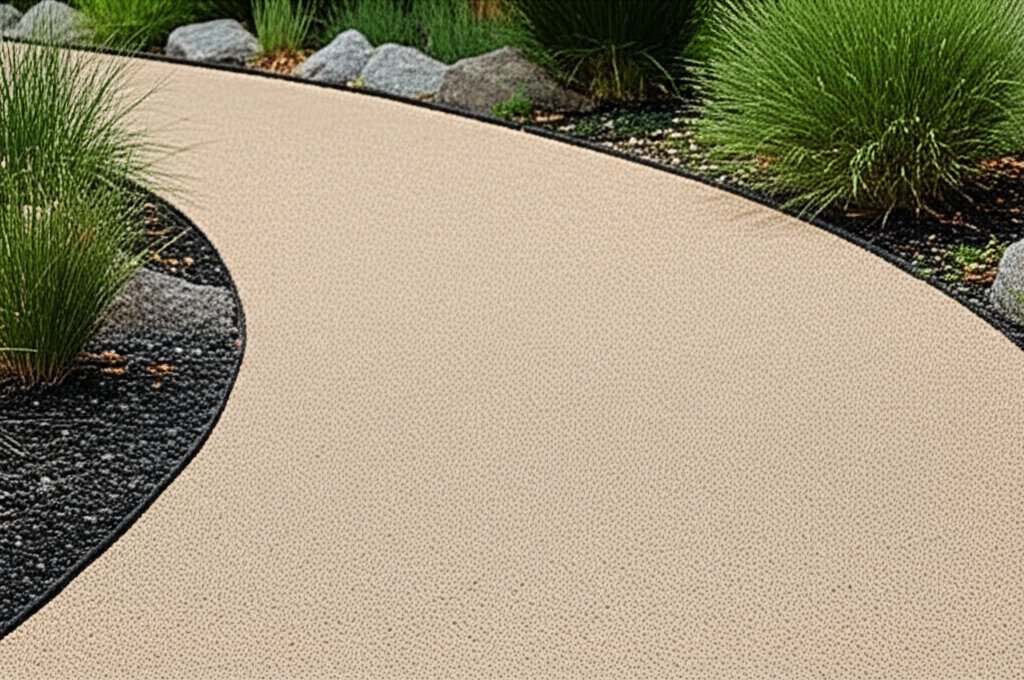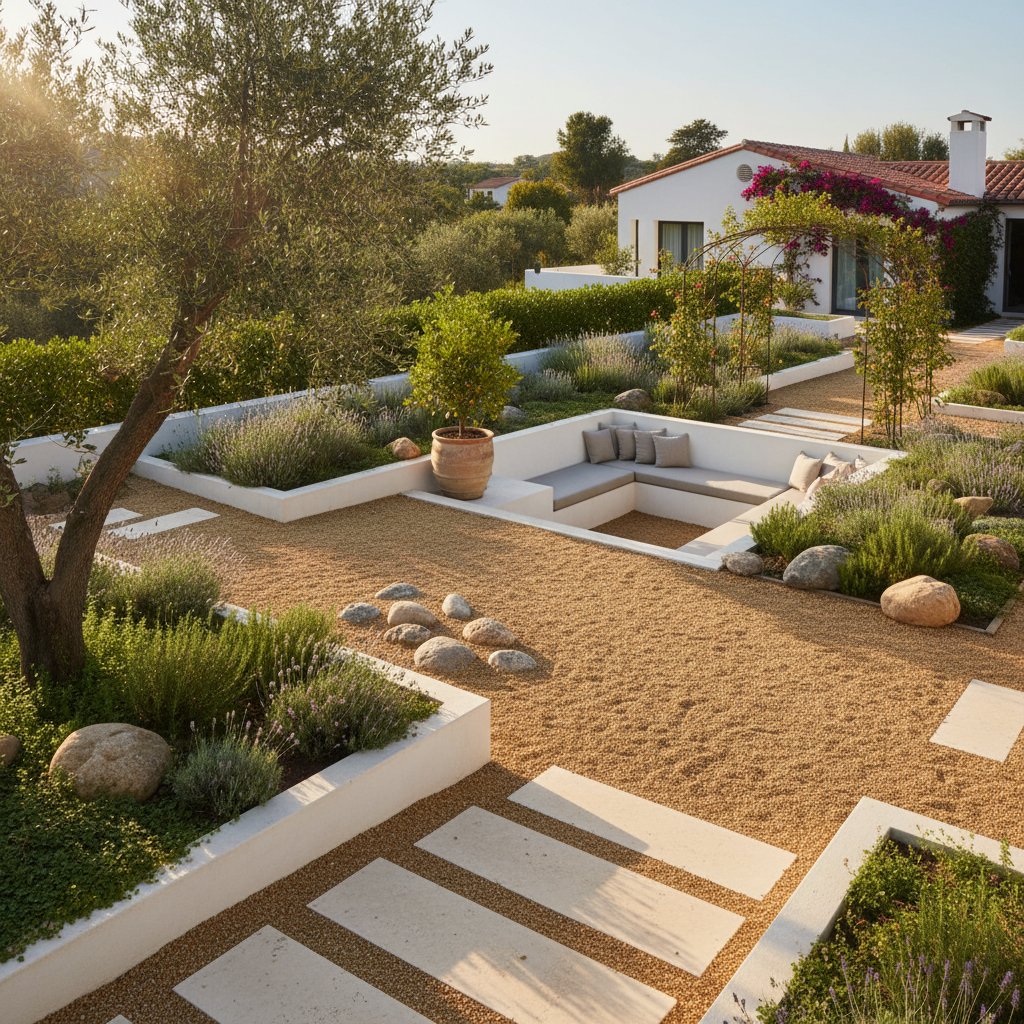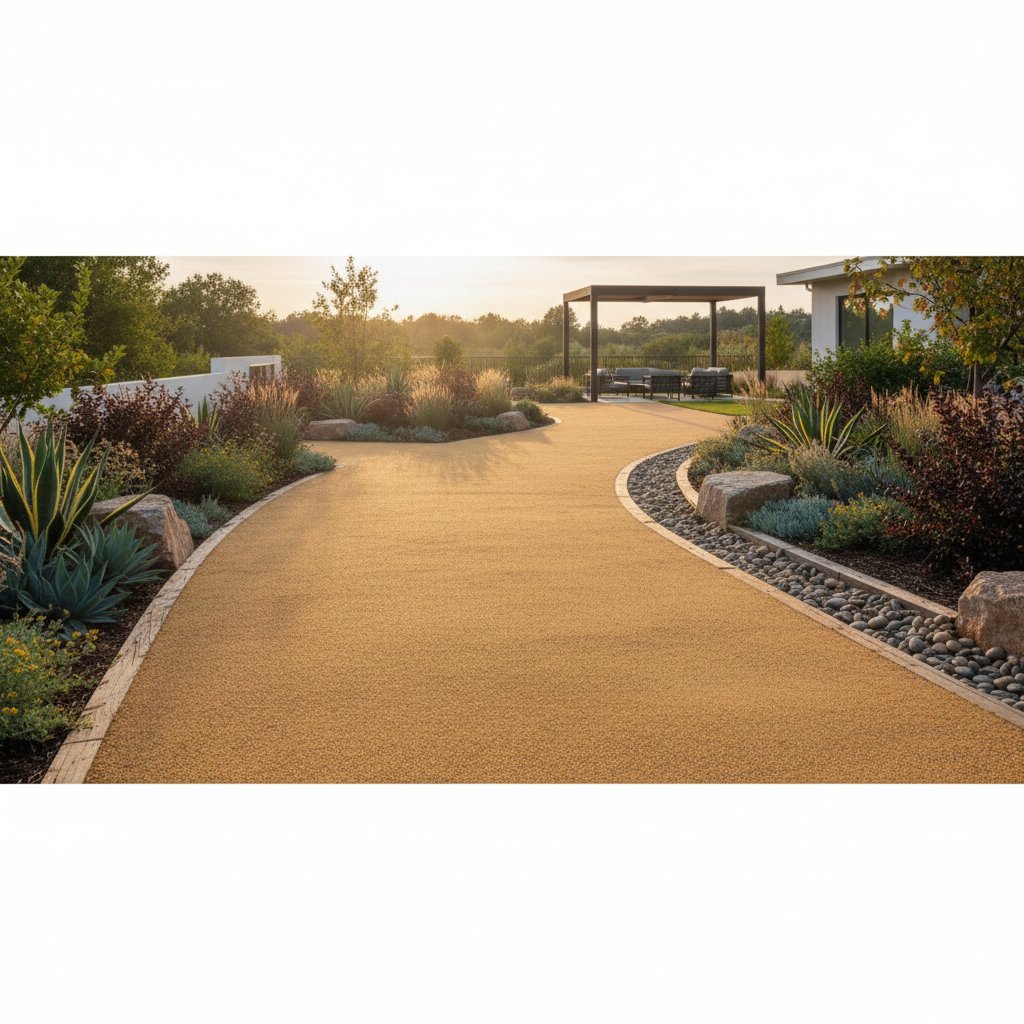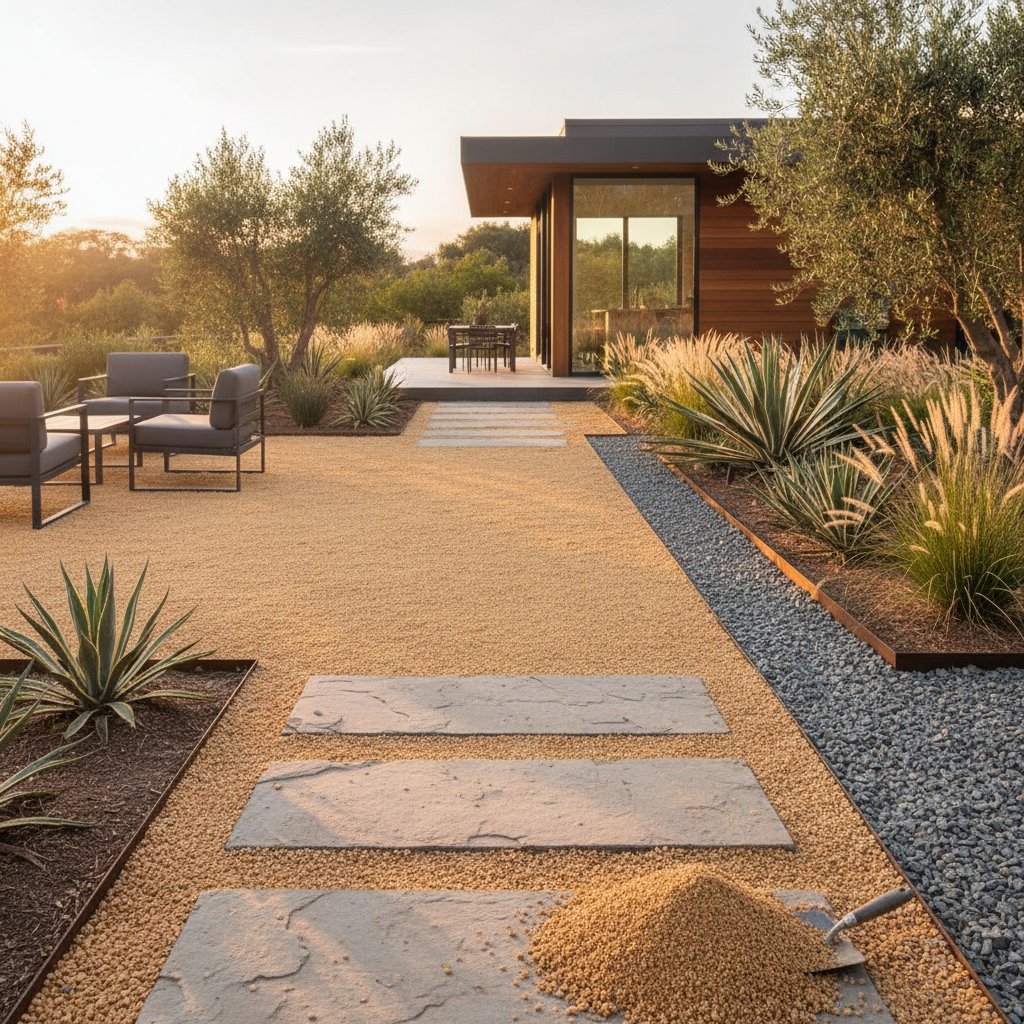Why Decomposed Granite Outperforms Gravel for Pathways
Homeowners seeking pathways that combine stability, modern aesthetics, and minimal upkeep often face tough choices. Gravel remains popular for its low initial cost and ease of installation. However, decomposed granite emerges as a superior alternative, offering a refined surface that withstands daily use while enhancing landscape cohesion.
Decomposed granite, known as DG, derives from weathered granite rock broken into fine particles. These particles compact to form a solid yet permeable layer. In contrast, gravel consists of larger, rounded stones that resist compaction and migrate under pressure.
Understanding Decomposed Granite and Gravel
Grasping the composition of these materials clarifies their performance differences.
Decomposed granite appears in three primary variants:
- Loose DG suits low-traffic zones, providing a natural, unbound finish.
- Stabilized DG incorporates a binding agent to enhance cohesion and resist displacement.
- Resin-bound DG forms a durable, semi-rigid coating ideal for high-use areas.
Gravel, derived from crushed stone or river pebbles, varies in size from fine pea gravel to larger aggregates. It maintains a loose structure, promoting drainage but inviting ongoing shifts. While both draw from natural sources, DG achieves greater integrity upon installation, balancing firmness with water infiltration.
Aesthetic Appeal and Design Integration
Contemporary landscapes demand materials that support sleek profiles and subtle textures. Decomposed granite delivers a uniform, finely grained surface that evokes polished earth tones. This consistency fosters a tidy appearance, aligning seamlessly with minimalist gardens or architectural features.
Gravel introduces a coarser texture, with visible stones creating irregular patterns. Such variability suits informal settings but disrupts the flow in structured designs. Over time, gravel's tendency to scatter undermines visual harmony.
Decomposed granite spans hues like warm golds, neutral tans, cool grays, and subtle reds. These shades integrate effortlessly with elements such as stone pavers, wooden accents, or steel borders. Select DG to unify pathways with surrounding plantings, achieving a layered yet streamlined outdoor aesthetic.
Walking Comfort and Practical Usability
Pathway materials must prioritize user experience, from daily strolls to accommodating mobility aids. Decomposed granite compacts to a stable base that yields gentle support underfoot. Barefoot walkers appreciate its mild cushioning, while wheels from strollers or carts navigate smoothly without snags.
Gravel's loose composition generates instability, as stones roll and separate during traversal. This unevenness poses challenges for those with balance concerns or when pushing wheeled devices. Gaps between pebbles trap debris and heighten slip risks on inclines.
Opt for decomposed granite to ensure reliable footing. Its design eliminates the need for rigid alternatives like poured concrete, preserving natural permeability.
Evaluating Costs
Budget considerations influence material selection, encompassing material prices and ongoing expenses.
Typical pricing includes:
- Loose DG at one to three dollars per square foot.
- Stabilized DG from three to six dollars per square foot.
- Resin-bound DG between seven and ten dollars per square foot.
- Gravel ranging from one to four dollars per square foot.
Initial gravel outlays appear economical, yet recurring tasks like raking and replenishing elevate lifetime costs. Decomposed granite demands upfront investment in proper setup but yields savings through reduced interventions. Factor in local labor rates, as DG installation involves specialized compaction techniques.
Installation Process
Proper execution determines a pathway's longevity and performance.
For decomposed granite, follow these steps:
- Excavate the site to three or four inches deep, removing vegetation and debris.
- Install a two-inch base of crushed aggregate, then compact it firmly for support.
- Apply DG in one- to two-inch layers, compacting each with a vibratory plate.
- Incorporate stabilizer for enhanced binding if selected.
- Mist the surface to activate natural adhesion, allowing settling over 24 hours.
Gravel setup involves site preparation, edging placement, and even distribution to two or three inches. Though quicker, this method overlooks compaction, leading to future settling. Invest time in DG's methodical approach for a resilient result that endures foot traffic and weather.
Managing Water Flow and Soil Stability
Effective pathways handle precipitation without compromising integrity.
Decomposed granite excels in permeability, channeling water downward to avert pooling. Its dense matrix shields underlying soil from washouts, proving effective on gradients. Stabilized options further bolster resistance to lateral flow during downpours.
Gravel permits infiltration but succumbs to displacement in storms, forming channels and exposing bases. Routine heavy rains demand vigilant border reinforcement to contain migration. Choose DG for regions prone to variable moisture, minimizing erosion risks and maintenance demands.
Upkeep and Endurance
Sustained appeal hinges on straightforward care routines.
Decomposed granite requires occasional sweeping to clear leaves or dust. Rejuvenate the surface every two to three years by topping with a quarter-inch layer and lightly compacting. Stabilized variants self-heal minor disturbances through rewetting.
Gravel demands weekly raking to redistribute stones and refill voids from embedding. Seasonal additions counteract sinking, while edging checks spread into adjacent areas. Decomposed granite's low-intervention profile conserves time and resources for enduring landscapes.
Sustainability Factors
Eco-conscious choices favor materials that support environmental health.
Decomposed granite minimizes site disturbance through tight packing, promoting groundwater recharge. Opt for organic stabilizers to avoid chemical runoff, safeguarding pollinators and waterways. Its longevity reduces replacement frequency, curbing resource extraction.
Gravel's mobility increases sediment transport, potentially clogging drains or harming aquatic habitats. Improper containment amplifies impervious surface effects. Prioritize DG to align pathways with regenerative gardening principles.
Design Flexibility
Versatile applications expand decomposed granite's utility beyond basic paths.
Shape it into winding trails, infill between flagstones, or expansive patios. Blend variants for zoned effects, such as firmer stabilized cores with looser borders. Pair with drought-tolerant flora for water-wise xeriscapes.
Gravel confines to linear or broad spreads, struggling in intricate layouts. Its coarseness clashes with refined hardscapes. Leverage DG's adaptability to craft fluid transitions, elevating spatial dynamics in urban or suburban settings.
Seasonal Resilience
Materials must adapt to temperature fluctuations and precipitation cycles.
Decomposed granite flexes with freeze-thaw actions, avoiding fractures common in rigid surfaces. Summer heat prompts minimal expansion, while rain reinforces binding. Address small upheavals by raking and misting for quick restoration.
Gravel heaves and settles erratically, fostering potholes after winters. Dry spells expose bases, inviting weed intrusion. Decomposed granite's adaptive nature ensures year-round usability with sparse adjustments.
Enhancing Curb Appeal and Value
Thoughtful surfacing elevates property perception and marketability.
Decomposed granite imparts a sophisticated finish, drawing eyes to intentional design elements. Its tonal subtlety complements facade styles from mid-century modern to Craftsman. Visitors experience seamless navigation, reinforcing positive impressions.
Gravel's informal charm fades with disarray, signaling deferred care. Accumulated scatter detracts from manicured beds and entryways. Install DG to boost aesthetic cohesion, potentially increasing resale appeal by five to ten percent through perceived upkeep.
Steps to Implement Your Decomposed Granite Pathway
Transition from planning to realization with targeted actions.
Assess your site's dimensions, traffic levels, and soil type to select the appropriate DG variant. Source materials from reputable suppliers, verifying particle uniformity. Engage a landscaper experienced in compaction for optimal results, or follow detailed guides for DIY projects.
Budget for tools like a plate compactor and edging restraints to secure longevity. Monitor initial settling, adjusting as needed. This investment yields a pathway that endures, beautifies, and simplifies your outdoor routine.



